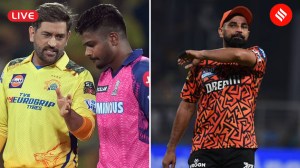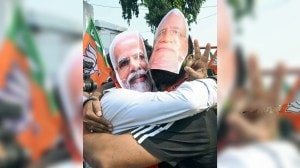Preserving wickets for late assault back in vogue: Harsha Bhogle
It is still early days at this World Cup,and there will be phases when it will seem tedious,but already a few trends are starting to manifest themselves.
It is still early days at this World Cup,and there will be phases when it will seem tedious,but already a few trends are starting to manifest themselves. These are the sparring rounds before the big bouts come along but teams are starting to show their cards a bit and from that point of view it has been a nice beginning.
It might seem that we are going back to the days when teams kept wickets in hand and looked to score runs towards the end of the innings. Certainly we are past the phase when a couple of players were assigned the kamikaze role; of going hell for leather at the top. The difference between the eighties and now though is that preserving wickets and playing safe in the first fifteen means getting seventy five runs rather than forty five!
But the fact that teams are opting to keep wickets intact (we saw that with Australia and with Sri Lanka and it has definitely become a pattern with Pakistan) is the first major effect of the third power play.
Teams now know that there are five very productive overs left and increasingly are using those to propel the innings along rather than merely finish it,which was the objective in the first place. In fact,I foresee a situation where teams will start taking the powerplay earlier,around the thirty fourth over when a hard ball becomes available.
And since the pitches seem very good to bat on,teams know they can wait. There have been days when the pitch started changing character towards the end of the second innings but that seems unlikely to happen here so teams batting second can take the powerplay with one less variable to encounter.
In our studio on ESPN Star Sports,Sourav Ganguly has been talking frequently of the importance of numbers 5,6 and 7 and you can see that with the good teams,who have all opted to go in with the extra batsman. Sri Lanka chose both Kapugedera and Thisara Perera,England went with Bopara as the sixth batsman plus the wicket keeper,Pakistan used Abdul Razzak to bowl the new ball to accommodate six batsmen plus him and Afridi. This means that the part-timers,inevitably slow bowlers,will have an increasingly important role. Sri Lanka used Dilshan and Samaraweera,England tried Pietersen and Australia played Smith and Hussey in support of Krejza. And I hope young kids all over are becoming aware of the importance of having a second string to your bow!!
Kenya ordinary
Sadly the associate nations have looked out of place. Kenyas fall has been particularly dramatic. The batting is too thin,the bowling ordinary and conceding 46 extras against Pakistan a luxury they couldnt afford. Soon they will be without Tikolo and Odoyo,the last survivors of what was actually a pretty decent team and then they may struggle to hold their own even among the next rung of cricket playing nations.
The Netherlands made an impact but that was largely because of the first class players in their midst and somehow the ICC has to find some way of ensuring that more teams,like the Dutch,have some experience around them. But on the evidence of the first five days,the ICCs decision to limit the number of teams seems to be the way to go.
Associate future
Having said that it raises the question of what the objective of the World Cup is. A reward to the best of the next set of teams is a laudable objective but it makes the first month tedious. If the idea is to showcase the modern game at its competitive best,then Im afraid the other teams arent making much of a point. Two qualifiers might be the way to go.
But amidst the one-sided encounters two performances stood out. Sehwags 175 showed what he can achieve if he bats long enough and Ryan ten Doeschates century against England was excellent to watch. And the most romantic moment came from the Dutch too; when Peter Seelaar had Kevin Pietersen caught at cover. There was a spontaneous eruption of joy and it was amateur cricket at its most charming. It put into perspective why we watch and play sport. Sadly I fear moments like those,few and far between,wont be enough to make a strong case for the smaller nations!



- 01
- 02
- 03
- 04
- 05




























